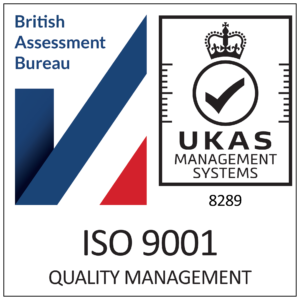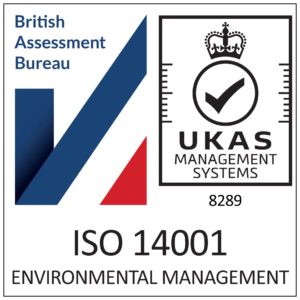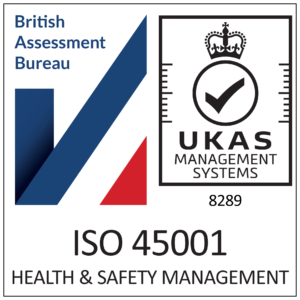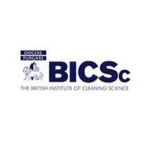
Maintaining Clean and Healthy Schools in Levenshulme
Overview
Importance of maintaining clean and healthy schools
Maintaining clean and healthy schools is crucial for the well-being and success of students. A clean and healthy school environment reduces the spread of germs and prevents the occurrence of illnesses, creating a conducive atmosphere for learning. It also promotes good hygiene habits among students, leading to improved overall health. Moreover, a clean and healthy school reflects the commitment of the school administration to provide a safe and nurturing environment for students to thrive. By prioritizing cleanliness and health, schools can enhance student attendance, reduce absenteeism, and improve academic performance.
Benefits of a clean and healthy school environment
A clean and healthy school environment offers numerous benefits for students, staff, and the entire school community. Firstly, it helps prevent the spread of infectious diseases, creating a safer and more productive learning environment. Secondly, it promotes better indoor air quality, reducing the risk of respiratory problems and allergies. Thirdly, it enhances the overall aesthetic appeal of the school, making it a more pleasant place to learn and work. Lastly, a clean and healthy school environment instills a sense of pride and responsibility in students, teaching them valuable life skills that they can carry into adulthood. By prioritizing cleanliness and health, schools can create an environment that supports the well-being and success of everyone involved.
Challenges in maintaining cleanliness and health in schools
Maintaining cleanliness and health in schools can be challenging due to various factors. One of the main challenges is the high volume of students and staff using the facilities on a daily basis, which can lead to increased wear and tear and the spread of germs. Additionally, limited resources and budget constraints can make it difficult to implement effective cleaning practices and provide adequate sanitation facilities. Moreover, ensuring compliance with hygiene practices among students can be a constant challenge. Despite these challenges, it is crucial for schools to prioritize cleanliness and health to create a safe and conducive learning environment for students. By addressing these challenges through comprehensive cleaning plans, regular monitoring, and collaboration with stakeholders, schools can overcome these obstacles and maintain clean and healthy learning spaces.
Implementing Effective Cleaning Practices
Developing a comprehensive cleaning plan
A comprehensive cleaning plan is essential for maintaining cleanliness and hygiene in schools. This plan should outline the specific cleaning tasks to be performed, the frequency of cleaning, and the responsible individuals or teams. It should also include guidelines for the use of cleaning products and equipment, as well as protocols for handling and disposing of waste. By developing a well-structured cleaning plan, schools can ensure that all areas, from classrooms to restrooms, are regularly cleaned and sanitized, creating a safe and healthy environment for students and staff.
Training and equipping cleaning staff
A regular cleaning service is vital to sustain a high standard of hygiene in your working environment. Click to arrange a free quote! SERVICES
- OFFICE
- SCHOOL
- RETAIL
- TRANSPORT
- SPECIALIST
- WINDOW
- PAT TESTING
- CONSULTANCY
CONTACT OUR SALES TEAM
Call to discuss your service requirements and we will provide a free no obligation quotation. 0800 148 8005
OR COMPLETE THE SHORT FORM below and we will contact you to discuss your requirements.
Regular monitoring and evaluation of cleaning practices
Regular monitoring and evaluation of cleaning practices is essential to ensure the effectiveness and efficiency of the cleaning procedures. This process involves regular inspections of the school premises to identify areas that require attention and evaluating the performance of the cleaning staff. Checklists can be used to track cleaning activities and ensure that all areas are properly cleaned. Additionally, feedback from students, teachers, and staff can be collected to assess the cleanliness and hygiene levels. By regularly monitoring and evaluating cleaning practices, schools can maintain a high standard of cleanliness and create a healthy environment for students and staff.
Promoting Hygiene and Sanitation
Educating students on proper hygiene practices
Proper hygiene practices play a crucial role in maintaining clean and healthy schools. By educating students on the importance of regular handwashing, proper coughing and sneezing etiquette, and personal cleanliness, schools can create a culture of hygiene and reduce the spread of germs. It is essential to incorporate these practices into the curriculum and provide visual aids such as posters and videos to reinforce the message. Additionally, schools can organize hygiene workshops and interactive sessions to engage students and make learning about hygiene fun and interactive. By instilling good hygiene habits in students, schools contribute to their overall well-being and create a conducive learning environment.
Providing adequate sanitation facilities
Providing adequate sanitation facilities is crucial in maintaining clean and healthy schools. Schools should ensure that there are sufficient and well-maintained toilets, handwashing stations, and waste disposal systems. Regular cleaning and disinfection of these facilities should also be prioritized to prevent the spread of germs and diseases. Additionally, schools can consider implementing hygiene promotion campaigns to raise awareness among students about the importance of proper sanitation practices. By investing in proper sanitation facilities, schools create a conducive environment for learning and contribute to the overall well-being of students.
Implementing handwashing programs
Implementing handwashing programs is a crucial aspect of maintaining clean and healthy schools. Handwashing is a simple yet effective way to prevent the spread of germs and reduce the risk of illnesses among students and staff. Schools can promote hand hygiene by providing adequate handwashing facilities with soap and water or hand sanitizers. Additionally, educating students on the proper handwashing technique and the importance of hand hygiene can reinforce good habits. Regular reminders and posters displaying the steps for effective handwashing can serve as visual cues for students. By prioritizing handwashing programs, schools can create a culture of cleanliness and contribute to the overall well-being of the school community.
Collaborating with Stakeholders
Engaging parents and guardians in maintaining cleanliness
Engaging parents and guardians is crucial in maintaining cleanliness in schools. Parents and guardians play a vital role in reinforcing good hygiene practices and instilling the value of cleanliness in their children. By actively involving parents and guardians in school cleaning initiatives, schools can create a sense of shared responsibility and promote a culture of cleanliness. This can be achieved through regular communication, organizing workshops or seminars, and providing resources such as cleaning guidelines and tips. Additionally, schools can encourage parents and guardians to participate in cleaning activities and provide feedback on the effectiveness of the cleaning practices. By working together, schools and parents can create a clean and healthy environment that benefits the well-being and academic performance of students.
Partnering with local health authorities
Partnering with local health authorities is crucial in maintaining clean and healthy schools in Levenshulme. By collaborating with these authorities, schools can gain access to valuable expertise and resources to address health-related issues. Local health authorities can provide guidance on best practices for sanitation, hygiene, and disease prevention. They can also assist in conducting inspections and audits to ensure compliance with health and safety standards. Additionally, partnering with local health authorities allows schools to stay updated on emerging health concerns and implement appropriate measures to protect the well-being of students and staff. This collaboration reinforces the commitment to creating a safe and healthy learning environment for everyone involved.
Working with the community to address environmental factors
In order to address environmental factors that may affect the cleanliness and health of schools in Levenshulme, it is essential to collaborate with the community. By engaging with local residents, businesses, and organizations, schools can work together to identify and mitigate potential environmental hazards. This can include addressing issues such as air pollution, waste management, and pest control. Additionally, community involvement can help raise awareness and promote responsible environmental practices among students and staff. By working hand in hand with the community, schools can create a cleaner and healthier learning environment for everyone.
Conclusion
The importance of maintaining clean and healthy schools
A clean and healthy school environment is crucial for the well-being and academic success of students. It not only helps prevent the spread of illnesses and diseases but also creates a conducive learning atmosphere. Regular cleaning practices, such as disinfecting surfaces and maintaining proper sanitation facilities, play a vital role in ensuring the health and safety of everyone in the school. Additionally, educating students on proper hygiene practices and implementing handwashing programs further promote a clean and healthy school. By prioritizing cleanliness and hygiene, schools can provide a safe and nurturing environment for students to thrive.
The need for ongoing efforts and collaboration
In order to ensure the continued cleanliness and health of schools in Levenshulme, ongoing efforts and collaboration are essential. Maintaining a clean and healthy school environment requires a collective commitment from all stakeholders. This includes school administrators, teachers, cleaning staff, parents, local health authorities, and the wider community. By working together, we can address the challenges and overcome the obstacles that arise in maintaining cleanliness and health in schools. Regular communication and coordination between stakeholders is crucial to ensure that cleaning practices are effective, hygiene education is reinforced, and sanitation facilities are well-maintained. It is only through ongoing efforts and collaboration that we can create and sustain a clean and healthy learning environment for our students.
The positive impact on student well-being and academic performance
Maintaining clean and healthy schools has a significant positive impact on student well-being and academic performance. A clean school environment provides students with a safe and hygienic space to learn and grow. It reduces the risk of illness and the spread of germs, allowing students to attend school regularly and focus on their studies. Moreover, a clean school promotes a sense of pride and belonging among students, which enhances their overall well-being and motivation to succeed. Research has shown that students in clean and healthy schools have higher attendance rates, improved concentration, and better academic outcomes. By prioritizing cleanliness and hygiene, schools can create an optimal learning environment that supports the overall development and success of their students.






